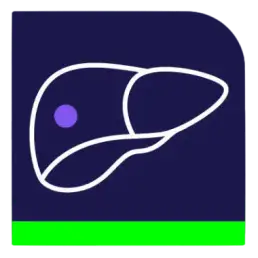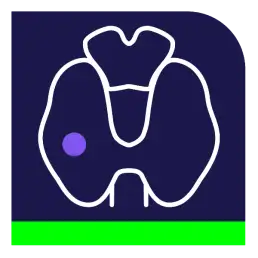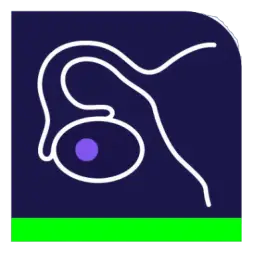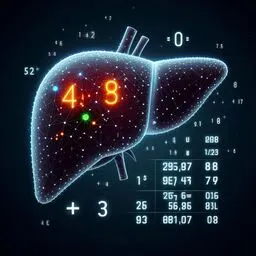LI-RADS Calculator 2024/2018/2017
Select the imaging modality:
References:
- Chernyak V, Fowler KJ, Kamaya A, et al. Liver Imaging Reporting and Data System (LI-RADS) Version 2018: Imaging of Hepatocellular Carcinoma in At-Risk Patients. Radiology. 2018;289(3):816-830. doi:10.1148/radiol.2018181494
- Lyshchik A, Fetzer DT, Kono Y, Wilson SR, Dietrich CF, Clevert DA, Meloni MF, Jang HJ, Kim TK, Lee JM, Minami Y, Kudo M, Piscaglia F. Liver Imaging Reporting and Data System Contrast-Enhanced US Nonradiation Treatment Response Assessment Version 2024. Radiology. 2024 May;311(2):e232369. doi: 10.1148/radiol.232369. PMID: 38805727; PMCID: PMC11140523.
Related Calculators:
LI-RADS ® guidelines implemented in this calculator:
Diagnosis
- LI-RADS ® CT/MRI v2018
- LI-RADS ® CEUS v2017
Surveillance
- LI-RADS ® Ultrasound Surveillance v2024
Treatment Response Assessment
- LI-RADS ® CT/MRI Nonradiation TRA v2024 + report generator
- LI-RADS ® CT/MRI Radiation TRA v2024 + report generator
- LI-RADS ® CEUS Nonradiation TRA v2024 + report generator

More About the LI-RADS Calculator
The Liver Imaging Reporting and Data System (LI-RADS®) was developed by the American College of Radiology (ACR) to provide a standardized framework for interpreting and reporting liver imaging findings. Its primary goal is to enhance consistency across radiologists and institutions, particularly for patients at high risk for hepatocellular carcinoma (HCC). Our LIRADS calculator is a helpful educational and clinical tool that simplifies classification based on imaging features. Please note that it is not endorsed by the ACR or any official medical society.
Understanding LI-RADS Categories
LI-RADS offers a tiered system of diagnostic categories that stratify liver observations according to the likelihood of HCC. These categories not only guide clinical management but also improve multidisciplinary communication and patient outcomes. The classification takes into account imaging modality, lesion size, enhancement patterns, and ancillary features.
LI-RADS CT/MRI v2018 Categories
The 2018 version of the LI-RADS CT/MRI criteria outlines specific diagnostic labels ranging from LR-1 (definitely benign) to LR-5 (definitely HCC). The goal is to clearly differentiate benign from malignant findings in patients with cirrhosis, chronic hepatitis B, or prior HCC.
- LR-1: Definitely benign
- LR-2: Probably benign
- LR-3: Intermediate probability for HCC
- LR-4: Probably HCC
- LR-5: Definitely HCC
- LR-M: Malignancy, not specific for HCC
- LR-TIV: Tumor in vein
LI-RADS CEUS v2017 Categories
Contrast-enhanced ultrasound (CEUS) is an alternative imaging modality used particularly when CT or MRI is contraindicated. CEUS LI-RADS criteria mirror CT/MRI categories while offering a radiation-free, dynamic assessment option. It is especially helpful in resource-limited or special patient populations.
- CEUS LR-1: Definitely benign
- CEUS LR-2: Probably benign
- CEUS LR-3: Intermediate probability
- CEUS LR-4: Probably HCC
- CEUS LR-5: Definitely HCC
- CEUS LR-M: Malignancy, not specific for HCC
- CEUS LR-TIV: Tumor in vein
- CEUS LR-NC: Not categorizable
Surveillance and Screening in At-Risk Populations
Regular surveillance plays a pivotal role in detecting HCC at an early, treatable stage. LI-RADS Surveillance US (formerly LI-RADS US) offers standardized ultrasound-based monitoring protocols. In February 2024, the terminology was updated to reflect its exclusive use in surveillance scenarios.
LI-RADS Ultrasound Surveillance v2024
The 2024 update emphasizes lesion size, echogenicity, and interval change. It provides guidance on when to repeat imaging, refer to CT/MRI, or proceed to biopsy. This framework is particularly valuable for tracking at-risk individuals, including those with cirrhosis or hepatitis B infection.
Treatment Response Assessment (TRA)
LI-RADS includes standardized criteria to assess response to locoregional and systemic therapy. Accurate reporting of treatment effects is essential for deciding whether additional therapy, transplant evaluation, or imaging follow-up is warranted.
CT/MRI Nonradiation TRA v2024
This newly introduced approach evaluates treatment response using MRI techniques that avoid ionizing radiation. It’s especially useful for patients requiring repeated assessments, such as those undergoing transarterial chemoembolization (TACE) or ablation therapy.
CT/MRI Radiation TRA v2024
This pathway outlines how to use contrast-enhanced CT or MRI (with radiation) to determine lesion viability post-treatment. Findings such as washout, capsule, and arterial phase hyperenhancement (APHE) remain crucial indicators in this framework.
CEUS Nonradiation TRA v2024
For patients unsuitable for CT or MRI, CEUS offers a low-risk alternative for treatment response monitoring. The May 2024 update focuses on how CEUS can differentiate viable tumor from necrotic tissue, improving post-procedure care decisions.
Educational and Clinical Implications
Our LIRADS calculator supports clinicians in quickly referencing classification criteria based on imaging features. It helps reinforce learning for radiologists in training and aids practicing providers in busy clinical environments. The tool integrates the latest updates and supports improved workflow integration.
We developed the L-RADS calculator to help clinicians align with current ACR recommendations, including updates to surveillance protocols, diagnostic categories, and treatment response evaluation. As LI-RADS evolves with emerging data, we do our best to keep this LIRADS calculator updated to reflect those changes, ensuring it remains clinically useful and educationally relevant.






Good tool!
Excellent!
Nice